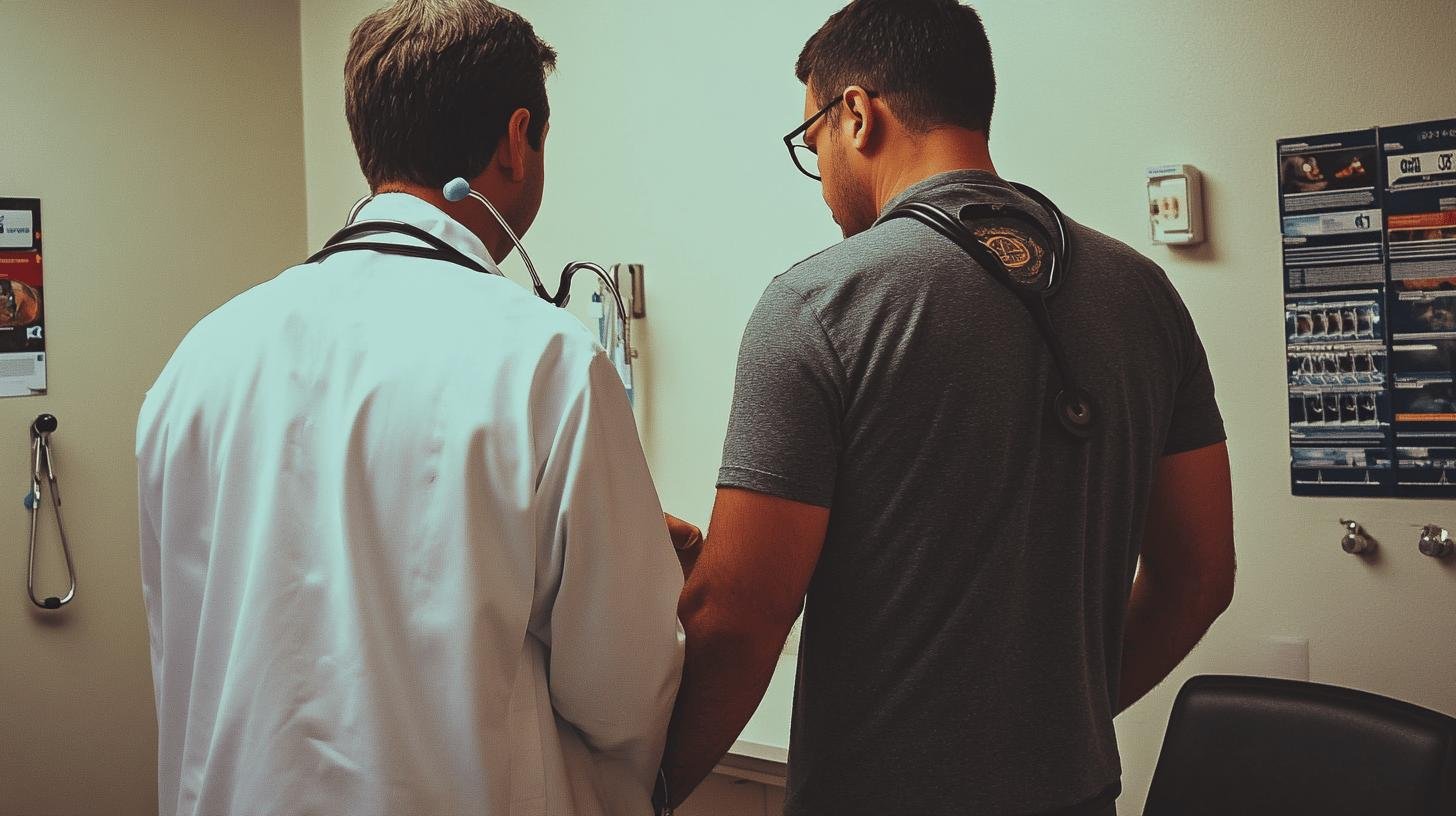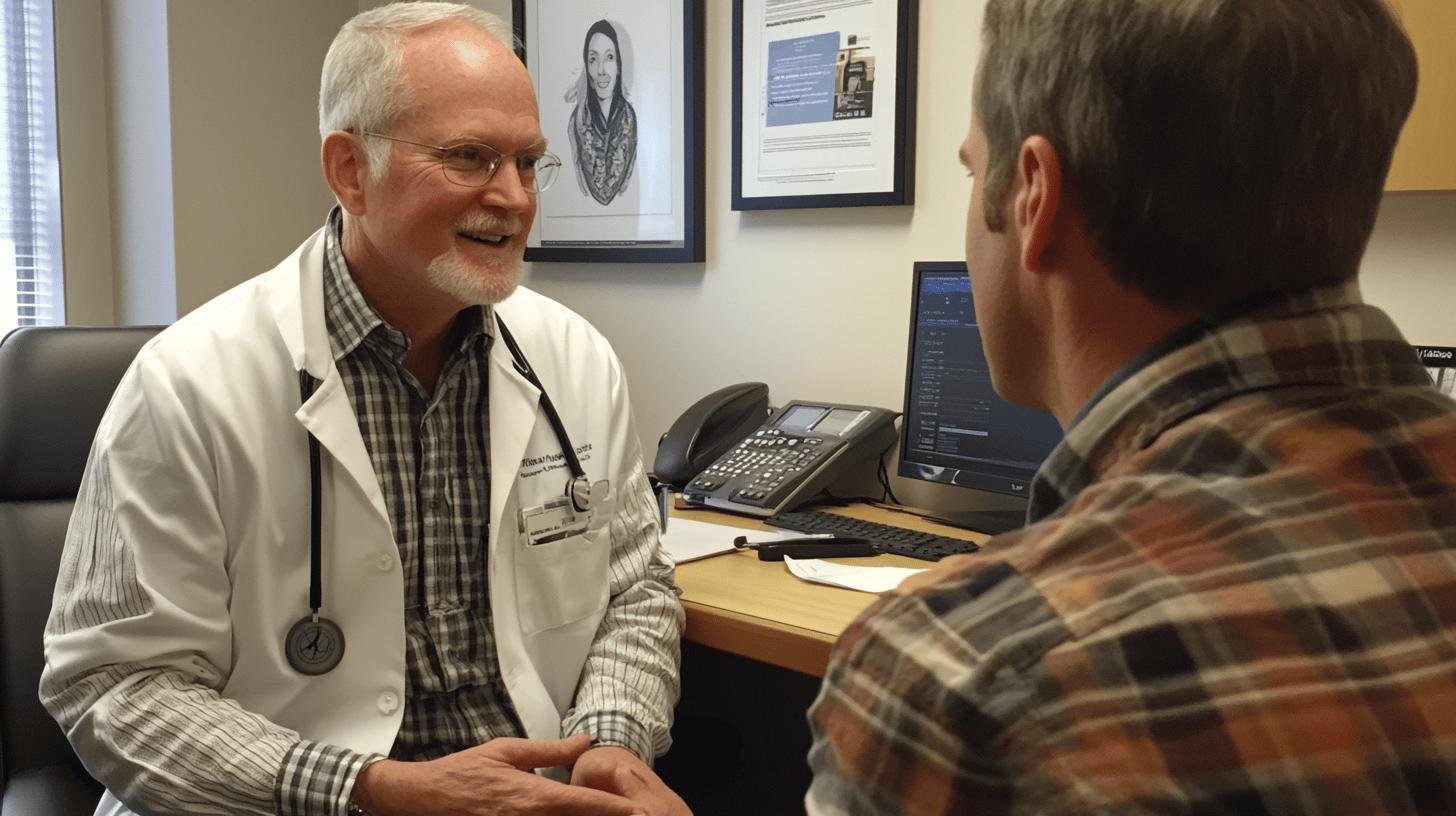TL;DR:
- Direct Care Providers (DCPs) deliver personalized healthcare without insurance involvement.
- Roles include patient assessments, medication management, and emotional support.
- Services: routine check-ups, preventive care, chronic disease management, urgent care, home visits, remote consultations.
- Qualifications: high school diploma, CPR/first aid certification, specialized training, state licensing.
- Direct Primary Care (DPC) costs $50-$150/month, covering multiple services.
- Benefits of DPC include lower costs, no insurance paperwork, longer appointments, and enhanced care.
- Choosing a DCP: check qualifications, services, patient reviews, and location, and schedule consultations.
- DPC vs. Concierge Medicine: DPC has lower costs and fewer fees for basic services.
Ever wonder what exactly a direct care provider does and why they matter? You’re not alone! Imagine having a go-to health expert who knows you by name, tailors your care, and skips all the red tape. Sounds like a dream, right? In this post, we’ll break down the roles and responsibilities of direct care providers. These healthcare heroes do everything from personalized patient assessments to providing emotional support. Ready to dive in? Let’s go!
What is a Direct Care Provider?
A direct care provider is a healthcare professional offering personalized, hands-on support in varied settings such as home care, hospitals, and assisted living facilities. They provide essential care services directly to patients, focusing on close, continuous relationships.
The magic of direct care lies in its personalized attention and strong patient relationships. Without third-party insurance involvement, direct care providers spend more time with each patient, ensuring better outcomes and higher-quality care. Patients experience a more intimate and responsive healthcare journey.
Direct care stands out by eliminating the need for third-party insurance. No more dealing with insurance claims or waiting for approvals. Direct care providers focus entirely on patient care, making each interaction meaningful and effective.
Typical roles of direct care providers include:
- Patient assessments
- Medication management
- Assistance with daily living activities
- Coordination of care
- Patient Education
- Emotional support
- Monitoring patient progress
Direct care providers offer comprehensive and personalized care by focusing on these roles.
Types of Services Offered by Direct Care Providers

Direct care providers offer various services to keep you healthy and detect issues early. Routine and preventive care are vital. Regular check-ups and screenings help catch problems early, leading to fewer health surprises.
Chronic disease management and urgent care are also crucial services. For conditions like diabetes or hypertension, direct care providers help manage these and monitor any changes. They handle urgent needs promptly, without the long waits typical in traditional healthcare.
In cases where you can’t visit the doctor’s office, direct care providers offer home visits and remote consultations. Whether you’re homebound or prefer a virtual check-in, these services make healthcare convenient and accessible.
| Service Type | Description |
|---|---|
| Routine Check-ups | Regular health evaluations to monitor overall wellness |
| Preventive Care | Screenings and tests to catch potential health issues early |
| Chronic Disease Management | Ongoing care for conditions like diabetes and hypertension |
| Urgent Care | Immediate attention for sudden health concerns |
| Home Visits | Healthcare services delivered right to your doorstep |
| Remote Consultations | Virtual check-ins for convenience and accessibility |
Qualifications and Training for Direct Care Providers
To become a direct care provider, you generally need a mix of education and certifications. At the minimum, a high school diploma or equivalent is required. Additionally, certifications in CPR and first aid are crucial. These ensure you can handle emergencies and provide basic life-saving care.
Specialized training programs also play a significant role. Depending on your role and state regulations, these can range from short courses to extensive training. State-specific licensing is another requirement, as each state has its rules for direct care providers. This often involves exams or additional training to meet local standards.
Typical qualifications include:
- High school diploma or equivalent
- CPR and first aid certification
- Specialized training programs
- State-specific licensing
- Continuing education opportunities
Continuing education is essential in this field. The healthcare landscape evolves constantly, so ongoing training helps keep your skills sharp and knowledge current.
Benefits of Choosing a Direct Primary Care Provider

Comparing Direct Primary Care (DPC) to traditional models, one standout benefit is cost. In traditional models, you face co-pays, deductibles, and unexpected bills. DPC offers a straightforward flat fee covering many services. This means predictable healthcare costs without hidden charges. Administrative burdens are reduced, eliminating insurance claims and multiple bills.
Another huge perk of DPC is the time and attention of your physician. Traditional settings often rush appointments, sometimes as short as 10-15 minutes. DPC doctors usually manage smaller patient panels, allowing them to spend 30 minutes or more with each patient. More time means a better understanding of your health concerns and tailored care, enhancing your healthcare experience.
Lastly, DPC models lead to better health outcomes and higher patient satisfaction. With more personalized care, longer appointments, and stronger patient-physician relationships, care aligns more closely with your needs. This results in more effective chronic disease management and thorough preventive measures. Patients report higher satisfaction levels, feeling more in control of their health and having a positive outlook on their healthcare journey.
Benefits include:
- Lower healthcare costs
- No insurance paperwork
- More personalized care
- Longer appointment times
- Enhanced patient-physician relationship
- Better chronic disease management
- Higher patient satisfaction
Choosing a DPC provider means seeking a more personalized, efficient, cost-effective healthcare experience.
How to Choose the Right Direct Care Provider
Location and convenience are key when choosing a direct care provider. Look for providers near your home or workplace to ensure easy access and quick visits.
Services offered and the provider’s qualifications also matter. Ensure the provider offers the specific services you need, whether routine check-ups, chronic disease management, or specialized care. Check their training and certifications to ensure they meet high standards.
Patient reviews and testimonials provide valuable insights. They offer a real-world glimpse into what to expect, and positive reviews often indicate good care. Check online reviews and ask the provider for testimonials to gauge care quality and patient satisfaction.
Steps to choose a provider:
- Check provider qualifications and experience
- Compare services offered
- Look for patient reviews and testimonials
- Consider location and convenience
- Schedule a consultation to meet the provider
Following these steps helps you find a provider who’s good on paper and an excellent fit for your personal healthcare needs.
Cost and Affordability of Direct Primary Care

Wondering about direct primary care (DPC) costs? Patients usually pay a flat monthly fee ranging from $50 to $150. This fee covers many services, including routine check-ups, urgent care, and preventive care, with no additional charges for these basics.
Why is this financially beneficial compared to traditional models? You avoid co-pays, deductibles, or surprise bills. The flat fee makes budgeting for healthcare straightforward and predictable. Plus, without administrative costs tied to insurance claims, DPC practices operate more efficiently, often passing savings onto you.
| Service | Monthly Fee Range |
|---|---|
| Routine Check-ups | $50 – $150 |
| Urgent Care | $50 – $150 |
| Preventive Care | $50 – $150 |
The DPC model makes healthcare more affordable and eliminates financial headaches from traditional models.
Direct Primary Care vs. Concierge Medicine
Direct Primary Care (DPC) and concierge medicine provide personalized care but differ in approach. Both prioritize patient relationships, offering services like routine check-ups, chronic disease management, and preventive care. This personalization sets them apart from traditional healthcare.
The difference lies in cost and service structure. DPC usually involves lower costs and a flat fee covering basic services. This makes budgeting easier. Concierge medicine often involves higher membership fees and additional charges for services beyond the basic membership. Both offer high-quality, personalized care, but their financial structures differ significantly.
Key differences:
- Lower costs in DPC
- No additional fees for basic services in DPC
- Higher fees for concierge medicine
- Potential additional charges for concierge medicine
- Both offer personalized care
Final Words
Direct care providers are the heart of personalized healthcare. They focus on patient relationships and outcomes without the insurance hassle. They offer hands-on support in various settings, such as at home and hospitals.
These pros handle everything from patient assessments to emotional support.
Their services cover routine check-ups, chronic disease management, home visits, and even remote consultations.
Becoming a direct care provider requires qualifications like CPR certification and state licenses.
Direct primary care offers many benefits, such as reduced costs and more time with your doctor.
Choosing the right direct care provider involves considering location, services, and reviews.
Direct primary care costs are straightforward, usually around $50 to $150 monthly.
Unlike pricey concierge services, DPC focuses on affordability without skimping on care.
Ultimately, a direct care provider ensures you get top-notch, personalized attention.
FAQ
Direct primary care near me
Q: How do I find direct primary care near me?
A: You can search online directories, ask for recommendations from friends or family, or check local healthcare listings to find direct primary care providers in your area.
Direct Care Provider Portal
Q: What is the Direct Care provider portal?
A: The Direct Care provider portal is an online platform where patients can access their health records, schedule appointments, and communicate directly with their healthcare providers.
Direct primary care pros and cons
Q: What are the pros and cons of direct primary care?
A: Direct primary care offers lower costs, more time with doctors, and personalized care. However, it might not cover specialized services; you still need separate emergency insurance.
Direct patient care examples
Q: Can you give examples of direct patient care?
A: Examples include routine check-ups, chronic disease management, preventive care, and urgent care services. Direct care providers also assist with daily living activities and home visits.
Direct Primary care monthly cost
Q: What is the monthly cost of direct primary care?
A: The monthly cost of direct primary care typically ranges from $50 to $150, covering various healthcare services without the need for additional insurance fees.
Direct primary care physicians
Q: What do direct primary care physicians do?
A: Direct primary care physicians provide personalized care, focusing on patient relationships, preventive care, chronic disease management, and extended appointments without insurance interference.
Direct primary care model
Q: What is the direct primary care model?
A: The direct primary care model involves patients paying a regular fee for a range of services. This allows doctors to spend more time with fewer patients and eliminates insurance bureaucracy.
Direct primary care insurance
Q: Does direct primary care include insurance?
A: No, direct primary care does not involve insurance. Patients pay a flat fee directly to the provider, simplifying billing and avoiding insurance-related hassles.
What does providing direct care mean?
Q: What does providing direct care mean?
A: Providing direct care means offering hands-on, personalized support to patients, focusing on their specific needs without third-party insurance involvement.
What is a direct provider?
Q: What is a direct provider?
A: A direct provider is a healthcare professional who offers primary care services directly to patients, often through a subscription or membership model, without relying on insurance payments.
What defines direct patient care?
Q: What defines direct patient care?
A: Direct patient care involves personalized, hands-on healthcare services provided directly to patients, focusing on preventive care, chronic disease management, and overall patient well-being.
Who provides direct patient care?
Q: Who provides direct patient care?
A: Direct patient care is provided by healthcare professionals such as doctors, nurses, and home health aides who offer personalized medical and support services directly to patients.

